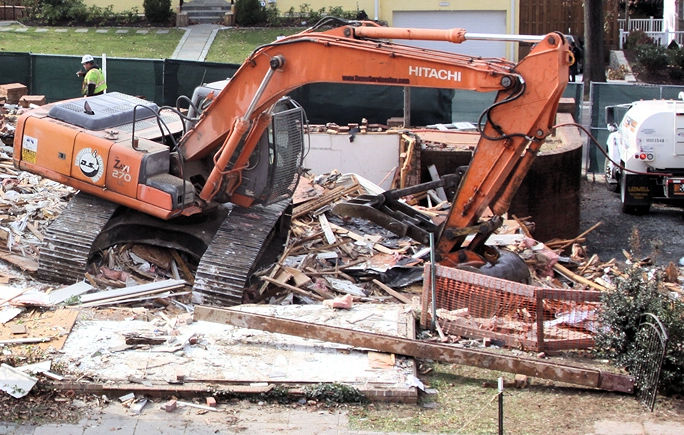23.A.12 Debris Removal.
- Walls, or sections of masonry, must not be permitted to fall upon the floors of the building in such masses as to exceed the safe carrying capacities of the floors.
- Any chute opening into which debris is dumped must be protected by a guardrail 42 in (1.1 m) above the floor or other surface on which personnel stand to dump the material. Any space between the chute and the edge of openings in the floors through which it passes must be covered.
- When debris is dropped through openings in the floors without chutes, the openings and the area onto which the material is dropped must be enclosed with barricades not less than 42 in (1.1 m) high and not less than 6 ft (1.8 m) back from the projected edge of the opening above.
- (1) Signs warning of the hazard of falling materials must be posted at each side of the debris opening at each floor.
- (2) Debris removal must not be permitted in lower areas until debris handling ceases on the floors above.
- All material chutes, or sections thereof, at an angle of more than 45º from the horizontal must be enclosed, except for openings equipped with closures at or about floor level for the insertion of materials.
- (1) The openings must not exceed 48 in (1.2 m) in height measured along the wall of the chute.
- (2) Such openings, when not in use, must be kept closed at all floors below the top floor.
- A substantial gate must be installed in each chute at or near the discharge end. A competent employee must be assigned to control operation of the gate and the backing and loading of trucks.
- When operations are not in progress, the area surrounding the discharge end of a chute must be closed.
- Where material is dumped from mechanical equipment or wheelbarrows, a toe board or bumper, not less than 4 in (10 cm) thick and 6 in (15 cm) high, must be attached at each chute opening.
- Chutes must be designed and constructed of such strength as to eliminate failure due to impact of materials or debris loaded therein.
- The storage of waste and debris on any floor must not exceed the allowable floor loads.
- In buildings having wood floor construction, the floor joists may be removed from not more than one floor above grade to provide storage space for debris provided falling material is not permitted to endanger the stability of the structure.
- (1) When wood floor beams serve to brace interior walls or freestanding exterior walls, such beams must be left in place until other support can be installed to replace them.
- (2) Floor arches, to an elevation of not more than 25 ft (7.6 m) above grade, may be removed to provide storage area for debris provided such removal does not endanger the stability of the structure.
- (3) Storage space into which material is dumped must be blocked off, except for openings for the removal of materials. Such openings must be kept closed when material is not being removed.
- (4) Floor openings must have curbs or stop-logs to prevent equipment from running over the edge.
- (5) Any opening cut in a floor for the disposal of materials must be not longer in size than 25% of the aggregate of the total floor area, unless the lateral supports of the removed flooring remain in place. Floors weakened or otherwise made unsafe by demolition must be shored to carry safely the intended imposed load for demolition.
Knowledge Check Choose the best answer for the question.
23-3. What is required where material is dumped down a chute from mechanical equipment or wheelbarrows?
You forgot to answer the question!

